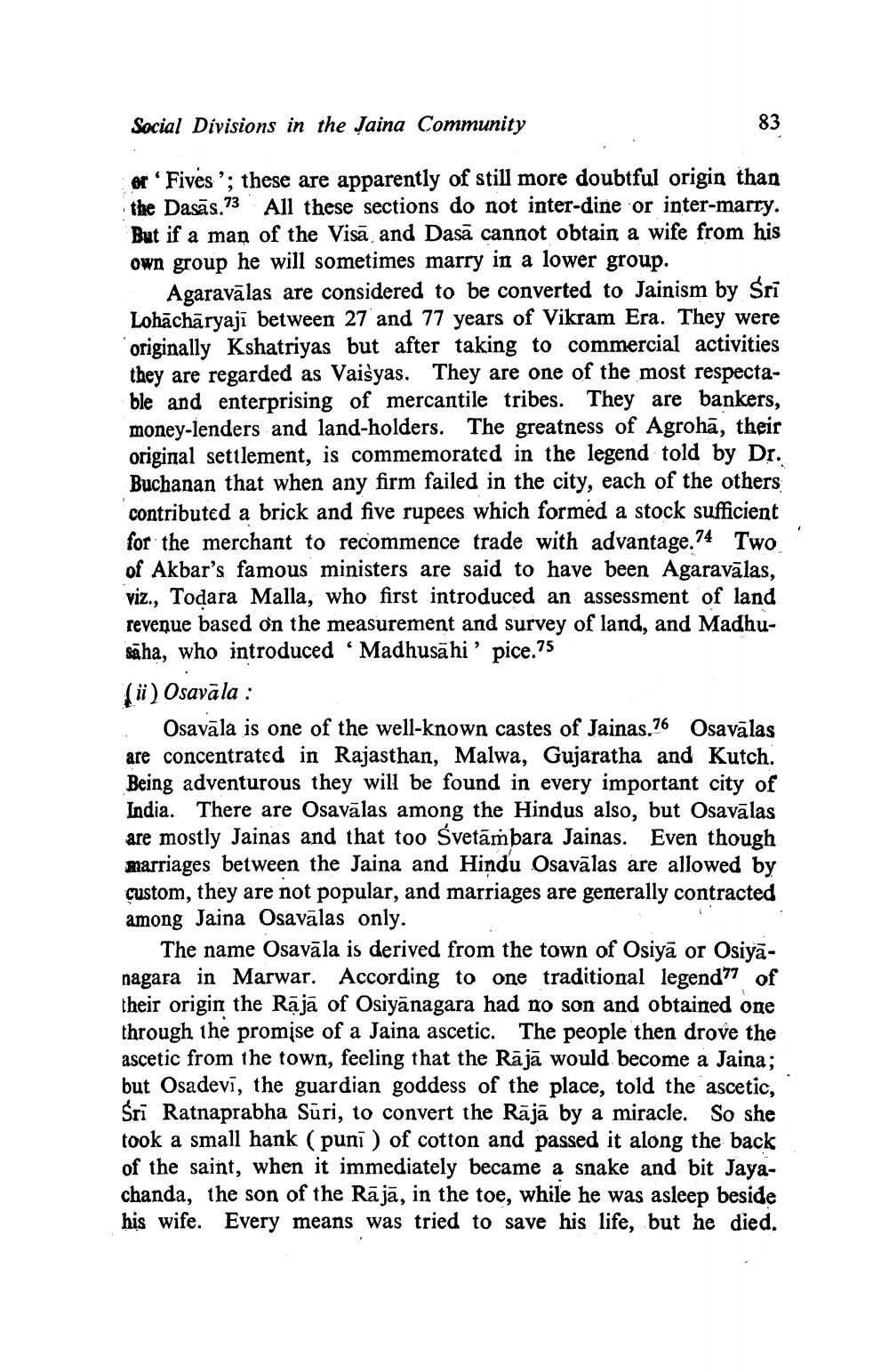________________
83
Social Divisions in the Jaina Community
"
or Fives'; these are apparently of still more doubtful origin than the Dasas.73 All these sections do not inter-dine or inter-marry. But if a man of the Visa, and Dasa cannot obtain a wife from his own group he will sometimes marry in a lower group.
Agaravalas are considered to be converted to Jainism by Śrī Lohacharyaji between 27 and 77 years of Vikram Era. They were originally Kshatriyas but after taking to commercial activities they are regarded as Vaisyas. They are one of the most respectable and enterprising of mercantile tribes. They are bankers, money-lenders and land-holders. The greatness of Agroha, their original settlement, is commemorated in the legend told by Dr. Buchanan that when any firm failed in the city, each of the others contributed a brick and five rupees which formed a stock sufficient for the merchant to recommence trade with advantage.7 Two of Akbar's famous ministers are said to have been Agaravalas, viz., Toḍara Malla, who first introduced an assessment of land revenue based on the measurement and survey of land, and Madhusaha, who introduced Madhusāhi' pice.75
74
(ii) Osavala:
Osavala is one of the well-known castes of Jainas.76 Osavalas are concentrated in Rajasthan, Malwa, Gujaratha and Kutch. Being adventurous they will be found in every important city of India. There are Osavālas among the Hindus also, but Osavālas are mostly Jainas and that too Śvetāmbara Jainas. Even though marriages between the Jaina and Hindu Osavalas are allowed by custom, they are not popular, and marriages are generally contracted among Jaina Osavālas only.
The name Osavala is derived from the town of Osiya or Osiyanagara in Marwar. According to one traditional legend77 of their origin the Raja of Osiyanagara had no son and obtained one through the promise of a Jaina ascetic. The people then drove the ascetic from the town, feeling that the Raja would become a Jaina; but Osadevi, the guardian goddess of the place, told the ascetic, Śrī Ratnaprabha Sūri, to convert the Rājā by a miracle. So she took a small hank (puni) of cotton and passed it along the back of the saint, when it immediately became a snake and bit Jayachanda, the son of the Rājā, in the toe, while he was asleep beside his wife. Every means was tried to save his life, but he died.




